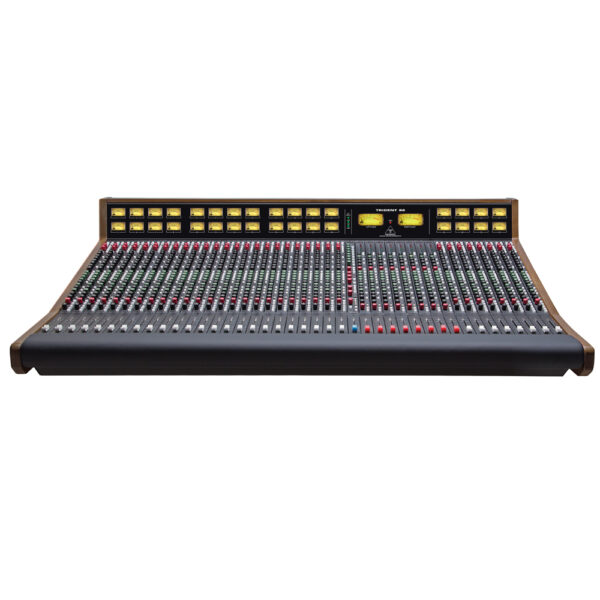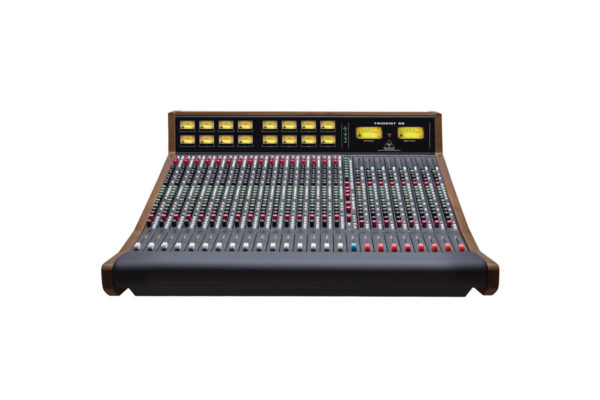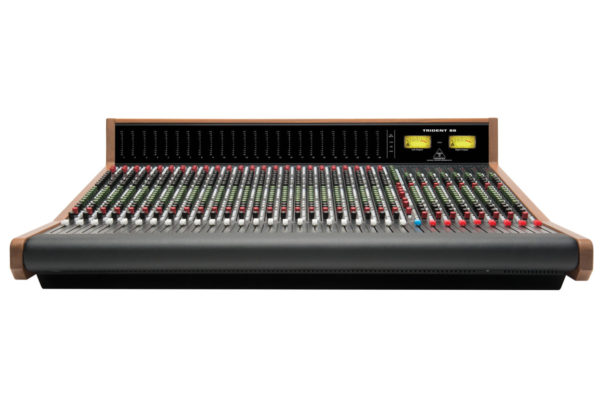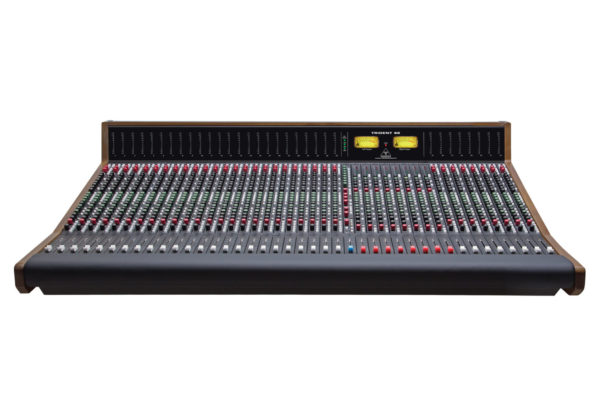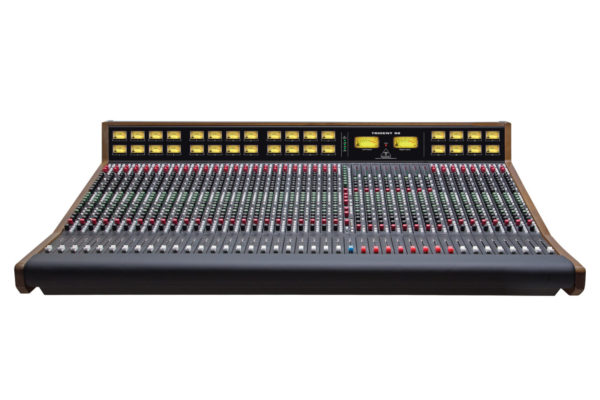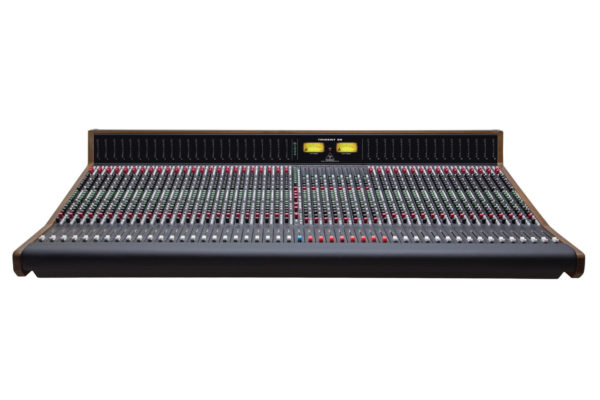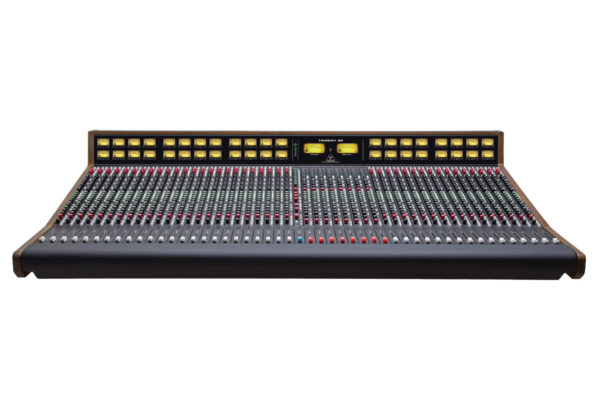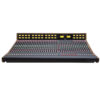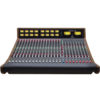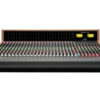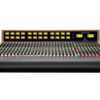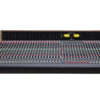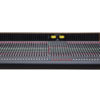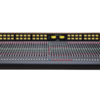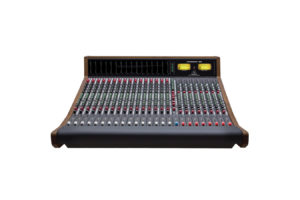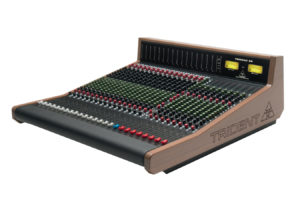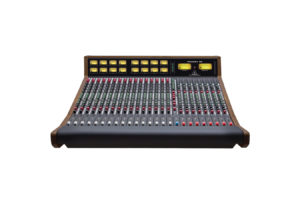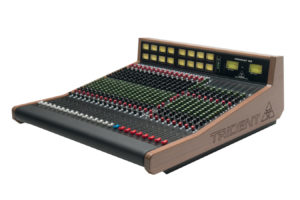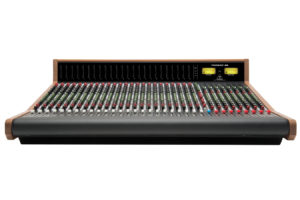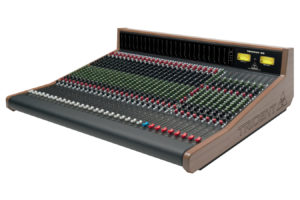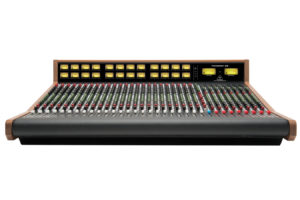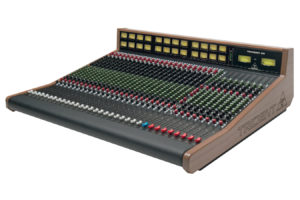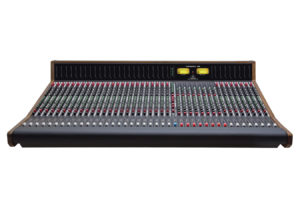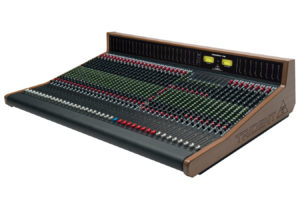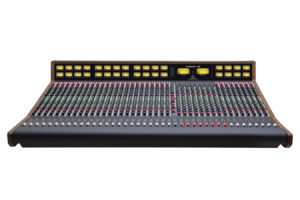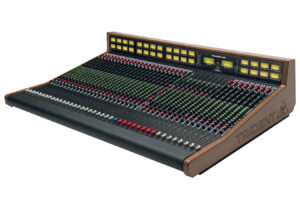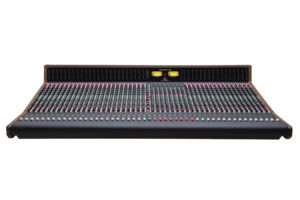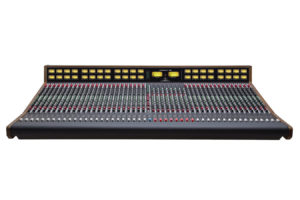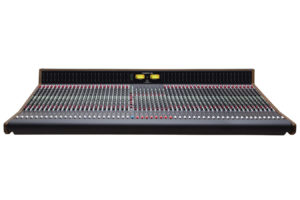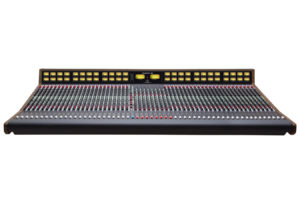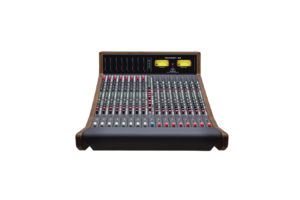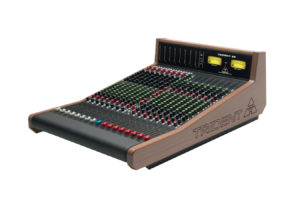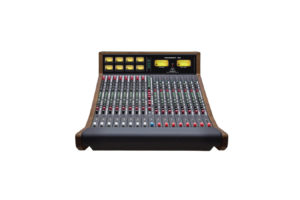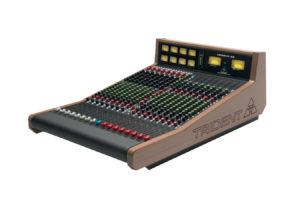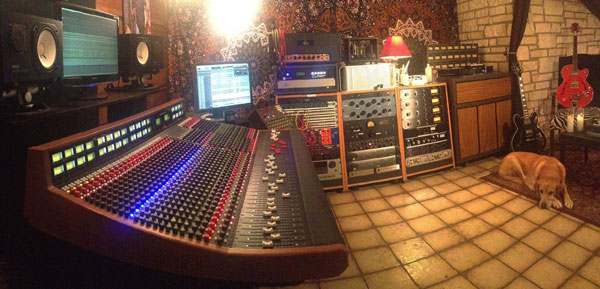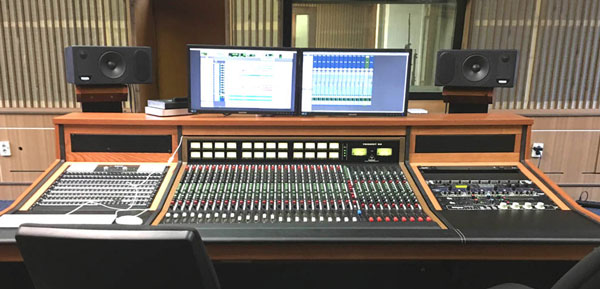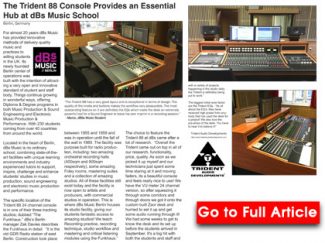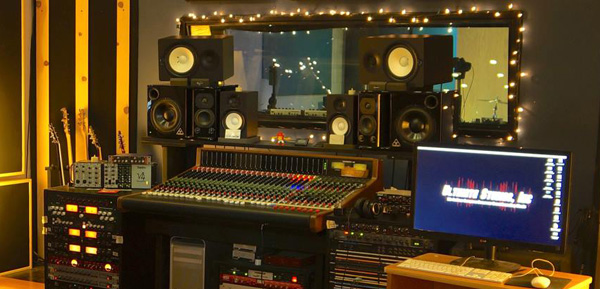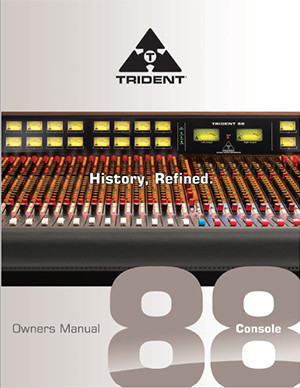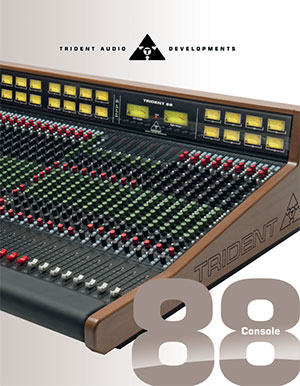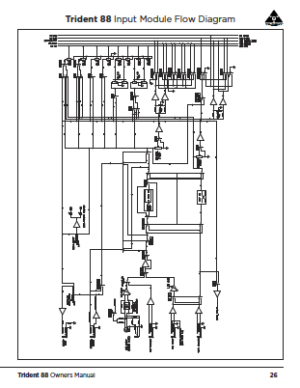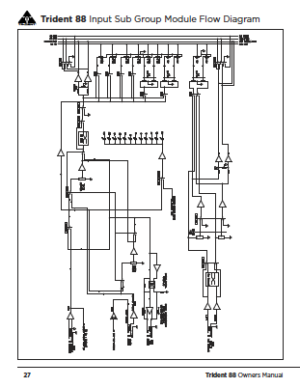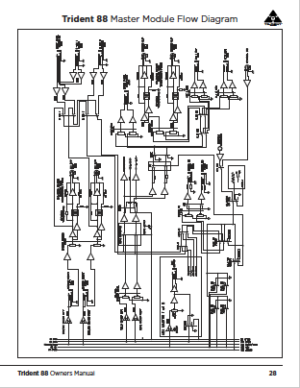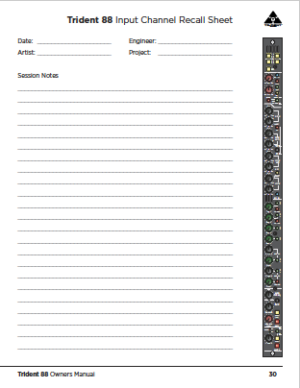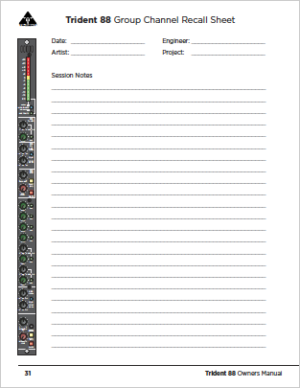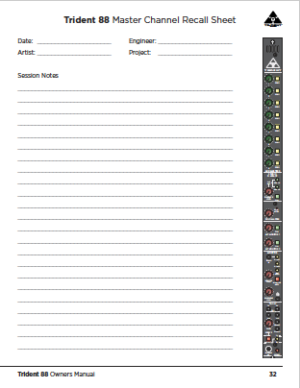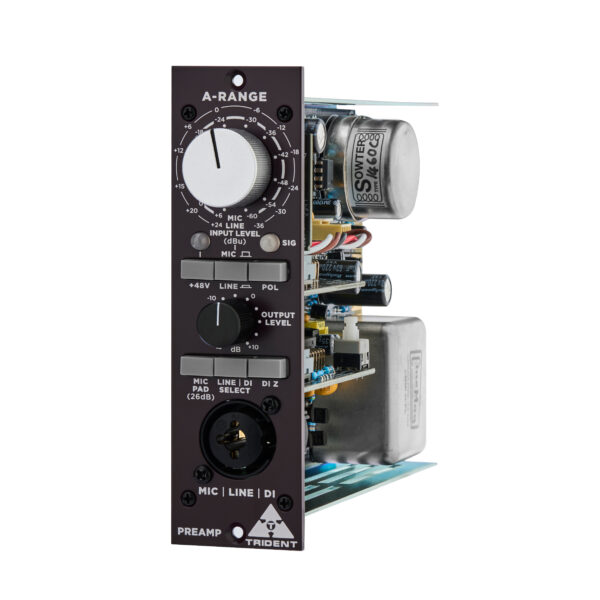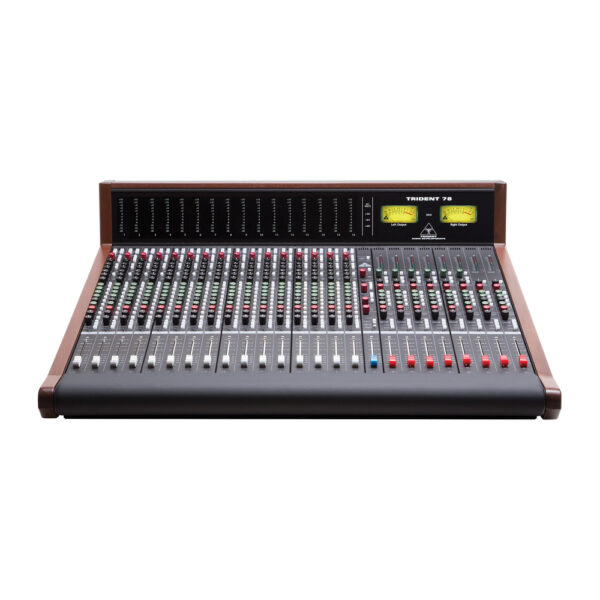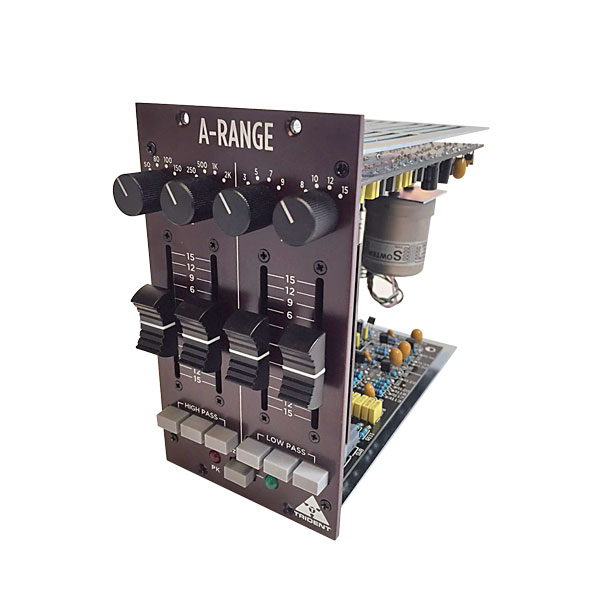- Overview
- Config
- Gallery
- Specs
- Audio
- Video
- Studios
- Demo
- Reviews
- Comparison
- Literature
- Warranty
Trident 88 Console Overview

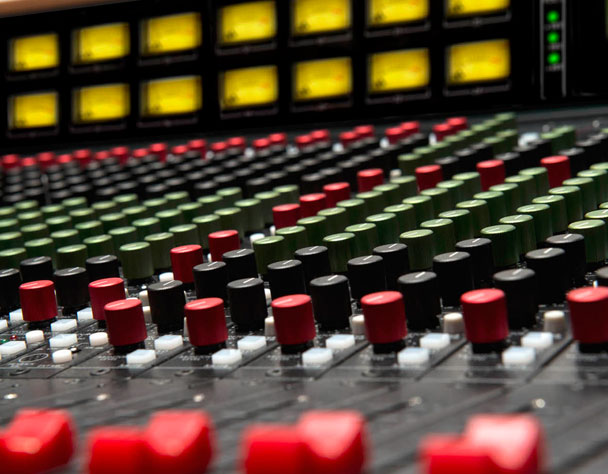
The Trident 88 is a classically styled, in-line, eight-buss analog console and an advancement in lineage of the revered Series 80 mixing desks.
Designed with manufacturability in mind, the 88 is artfully constructed for ease of use and workhorse reliability.
Available in stock configurations of 16, 24, 32, and 40 channels. The model 88 is sized to fit the modern, high end facility – whether private, institutional, or professional.
Along with the pleasingly familiar routing and feel of a classic Trident desk, are modern refinements that serve to improve functionality, workflow and performance specifications.
For example, integration with outboard processors and mic pre’s, such as the 500 format, is provided simply and elegantly by means of an exclusive, switchable input. This bypasses the channel preamp circuitry and allows for insertion of external signal sources directly to the channel equalizer.
Being a Trident, the equalization is of course, wonderful, and on the 88 – it is also plentiful. Always available on the channel, monitor, effects returns and group sections.
In the area of customization, the 88 has options for vu metering, transformer I/O, automation, short loading and channel configurations exceeding 40 inputs.
Features found throughout the 88 make for a straightforward and powerful package, but paramount to all else is The Sound. Among the many styles, preferences and methods of recording exists the expectation that a board must have the ability to be pushed hard and sound big. With 27dB of headroom, the 88 is designed to be pushed hard and sound big. This is a hallmark of the series 80 consoles and the 88 carries that tradition forward.
Bottom line: The Trident 88 was created with all of this in mind so that you can use it to make great sounding tracks.
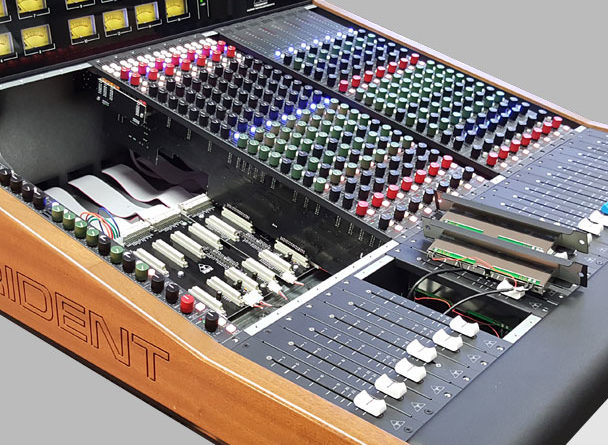
Fully Modular Design:
Designed with manufacturability in mind.
The Trident 88 was made from the ground up to be a rugged and reliable console. We went to great lengths to make sure that the 88’s are easy to build and equally easy to maintain. The 88 is designed so that the entire console can be serviced with a single screw driver. Motherboards are shock-mounted with rubber standoffs to isolate them from the chassis and provide additional protection from structure born stresses. A channel can be swapped in matter of minutes and the console will continue to function if one or more channels are removed.
- Faders, channels, groups, and master section are individually removable.
- All rear connections are also removable.
Split/Inline Console:
Having a Split/Inline console effectively will double your inputs to your stereo buss. This has become more and more a common configuration for recording consoles in today’s market. We took it a step further and added an EQ to the monitor path that can also be swapped with the main channel EQ.
- Dual Input to the Channels – line and monitor
- Four band, sweepable channel EQ, is switchable with monitor Tilt EQ.
- Dual Inserts to each Channel at the preamp, or the main channel EQ.
- 8 Auxes: 6 mono and 2 Stereo
- 27dB of headroom
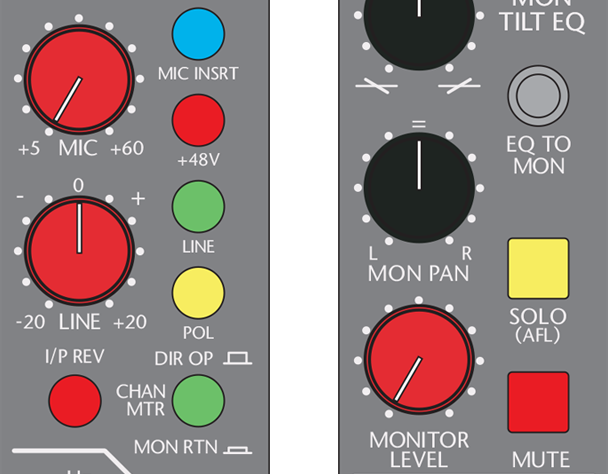
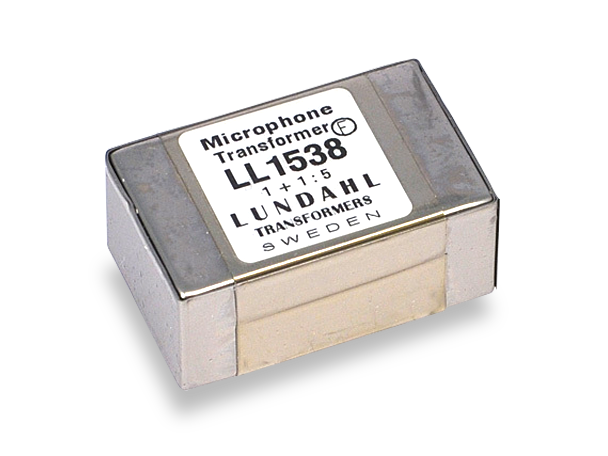
Microphone Preamp:
Incorporating a Discrete Class A preamp to the 88’s is a departure from previous Trident console preamps in the 80 Series. This give’s the 88’s a higher quality stock preamp from the start and also incorporates the option to add a Lundahl input transformer to any channel desired.
- Discrete Class A
- 65dB gain
- Balanced inputs, with optional Lundahl transformers
- Full bypass insert
- Input Reverse Switch
- Mic/Line Switch
- Phantom Power Switch
Console EQ:
Expanding the great success of 80 Series recording consoles is only logical. Taking the highly regarded 80B EQ and improving on it with the 80C EQ was a great step forward for its time. The 80C EQ took all of the great sound of the 80B and gave it even more control. Keeping the 80C EQ as the brawn of the 88’s was a decision that required no second thought.
Adding more EQ to the 88 was the next step forward for a more versatile analog recording console’s progression. Having EQ to the vast majority of the inputs to the 88 console means more analog controls at your fingers.
- High and low shelving
- Low/high mid peaking
- 4 Sweepable bands boost/cut to +/-15dB.
- 50Hz high pass filter
- Insert pre/post eq
- Monitor in: Tilt EQ
- Group FX Returns: 12kHz and 80hz shelving
- Group Monitor Returns: 12kHz and 80hz shelving

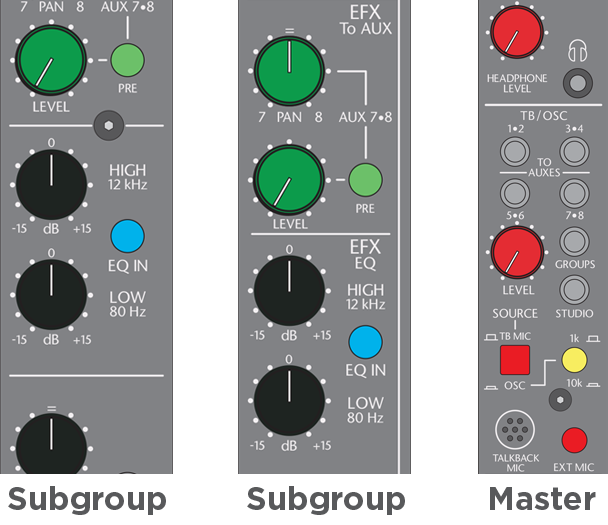
Master Section:
Keeping control of your workflow with ease and speed is the core function of an analog recording console. Your time spent setting up a mix and the ability to have tactile control with immediate effect over your work is essential and time saving.
The 88’s are designed to give you maximum control and routing options all onboard at your fingertips. Making your creative process more effective and saving you time in the process.
- 8 Subgroups
- 3 Monitor Controls
- 8 Monitor returns with high and low EQ
- 8 Auxes; 6 Mono 2 Stereo
- 8 Stereo FX Returns with high and low EQ
- 8 Stereo Aux Returns assignable to the Stereo FX Returns
- 1/8″ TRS Input Onboard
- Talkback to Auxes in pairs, Groups, or Studio
- Built in Oscillator selectable at 1k or 10k
Configuration
Input Section Feature Highlights
Separate Mic and Line Gain Control
Independently set your Mic and Line levels on each channel.
I/P Reverse Switch
Flips channel input to the monitor section.
Meter Select Switch
Allows you to choose metering from the Direct Out or Monitor Return.
Mic Pre
A fully discrete Class A design mic pre with the option to add a Lundhal transformer to as many channels as you like. In addition the preamp has a full bypass post fader insert point that allows you to easily incorporate any external preamp from your collection or 500 Series rack.
EQ
A 4 band fully sweepable Trident EQ is at the core of this console. Every channel not only has a full EQ but also a Tilt EQ on the Monitor section. In addition there is the ability to switch the full EQ from the Input path to the Monitor path. Furthermore the EQ has its own independent Insert. Like the preamp you can also insert to the EQ path and either bypass the EQ for any other outboard EQ or use them in conjunction with each other.
Master and Aux Section Highlights
Master Section
The master section features 8 AUX Masters each with Solo. AFL/PFL Master with level adjustment. In addition to the main speaker outputs there are also 2 separate ALT Monitors, each with level control and on/off switches. Easy studio playback through Mono Auxes 1&2, as well as stereo over Aux 7/8. The Monitor section allows the return of 2 separate stereo signals direct into the master section with level and mute. Or plug your portable device directly into the panel with a top mounted 1/8th inch TRS input. Through Talkback control you can talkback to the Auxes in pairs, or the groups, or to the studio. Either through the onboard talkback mic or an external mic.
Monitor Section
The Trident 88 is a split in-line console. This means you can switch the inputs on each channel providing an easy workflow when tracking and mixing. On top of that, all the of the Monitor inputs have their own Tilt EQ. This means you have 2 separate inputs per channel, both with versatile EQ.
Aux Section
The Trident 88 features 8 Aux sends all with pre or post fade selection, accessible on every channel. AUX 1/2 and 7/8 can be sent to the Monitor section. AUX 5/6 & 7/8 are both stereo with pan control for each.
Download a High-Res Channel Rendering
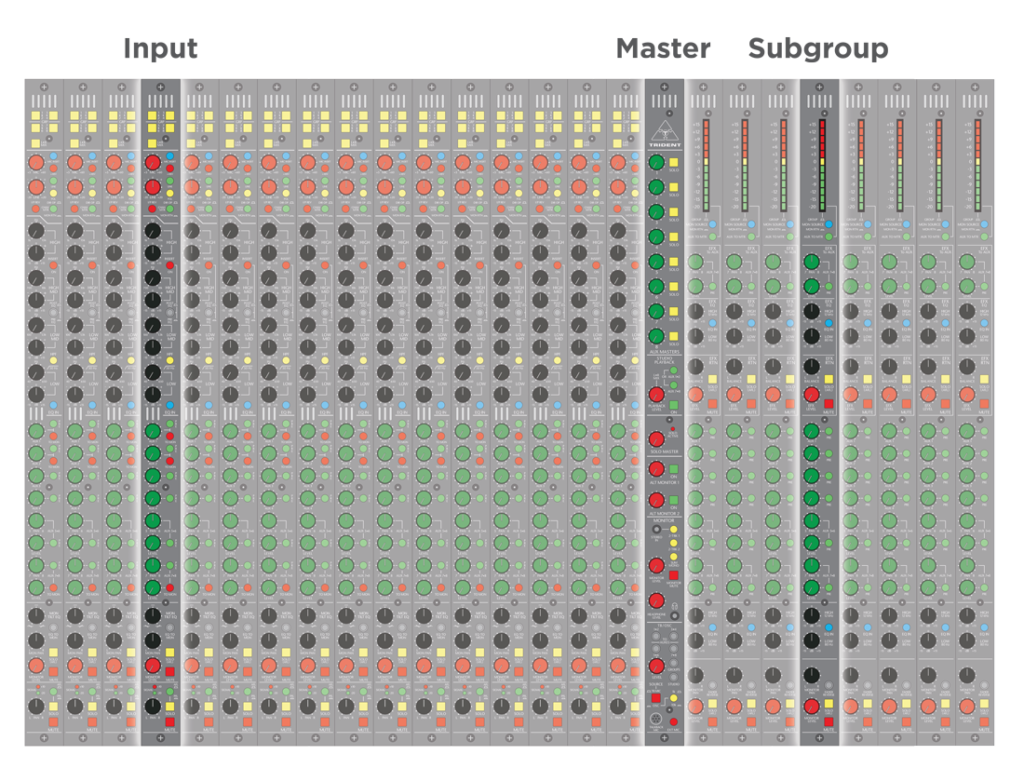
Connections
The Trident 88 connections are all via high quality 1/4” Balanced TRS jacks, and XLR Combo jacks.
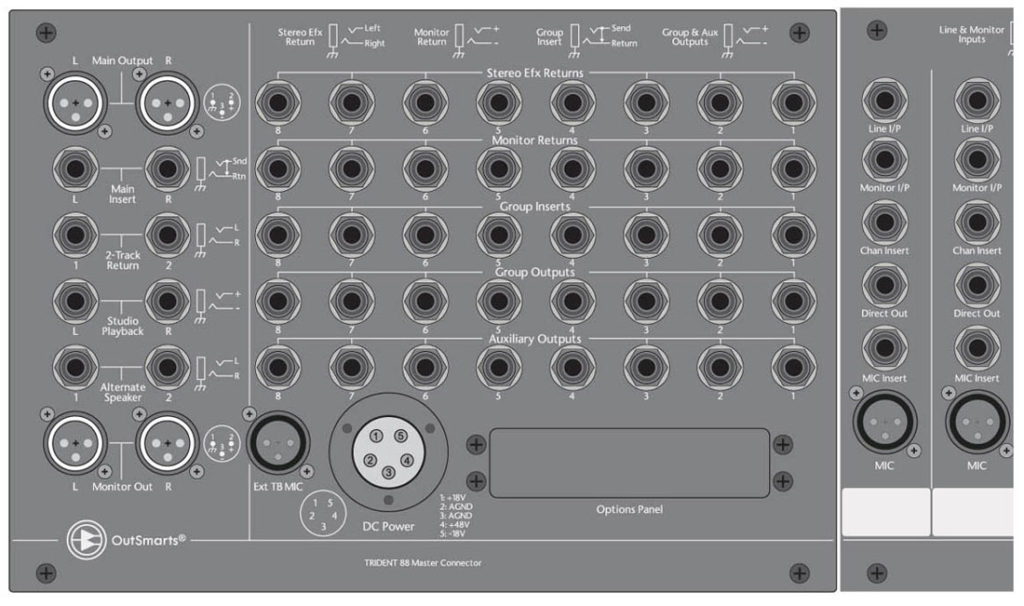
Watch Trident’s designer/engineer Taz Bhopal demonstrate the modules and connector panel for the Trident 88.
Trident 88 Input Module
Trident 88 Master Module
Trident 88 Subgroup Module
Overview of the Trident 88 Console’s
Rear Connector Panel
Product Specifications
| Input Impedance | |
| Microphone: | >2KΩ electronically balanced |
| Line: | >10KΩ electronically balanced |
| Output Impedance | |
| Left/Right, Monitor O/P, Group and Auxes | <60Ω (Outsmarts® Drive) |
| All other Outputs | <100Ω |
| Frequency Response | |
| Mic Input to Mix Output | <+0, -0.3dB 20Hz to 80KHz @ 6-40 dB gain. |
| Line Input to Mix Output | <0, -0.3dB 20Hz to 60KHz @ 0 dB gain. |
| Distortion/Noise (T.H.D +Noise) at +15dBu Output | |
| Mic XLR Input to any Output (-20dBu input) | <0.005% |
| Line Input to any Output | <0.003% |
| Monitor/Tape Return Input to any Output | <0.003% |
| Noise | |
| Mic EIN (20-20KHz, 150Ω source, 60dB gain) | <-128.5 dBu |
| Residual Bus Noise (Output fader at min) | <-95 dBu |
| Bus Noise (40 inputs continually assigned) | <-81 dBu |
| Bus Noise (24 inputs routed equiv. to 64 Inputs) | <-77 dBu |
| Crosstalk | |
| Adjacent Channel | < -90dB (@20KHz) |
| <-110dB (@1KHz) | |
| Channel Fader Mute | <-95dB (20Hz to 20KHz) |
| Monitor/Tape Return Mute | <-85dB (20Hz to 20KHz) |
| Mix/Bus Assign | <-80dB (20Hz to 20KHz) |
| Aux to Aux | <-80dB (20Hz to 20KHz) |
| Maximum Input | |
| Mic (XLR) Input (at min gain) | +17dBu |
| Mic (1/4") Input (at min gain) | +42dBu |
| Line (at min gain) | +42dBu |
| Channel Insert Return | +22dBu |
| All Output Insert Returns | +28dBu |
| Maximum Output | |
| Mix, Group, Aux, Monitor Outputs | +26.5dBu (Into 600Ω) |
| Insert Send, Studio, Alt Outputs | +22dBu (Into 2KΩ) |
| Phase | |
| Mic Input to Direct Out | +17° to -8° ..... 20Hz to 20Khz |
| Mic In to Mix Output | +25° to -17° ..... 20Hz to 20Khz |
| Line In to Mix Output | +25° to -20° ..... 20Hz to 20Khz |
| Monitor/Tape Return to Mix Output | +15° to -20° ..... 20Hz to 20Khz |
Product Dimensions
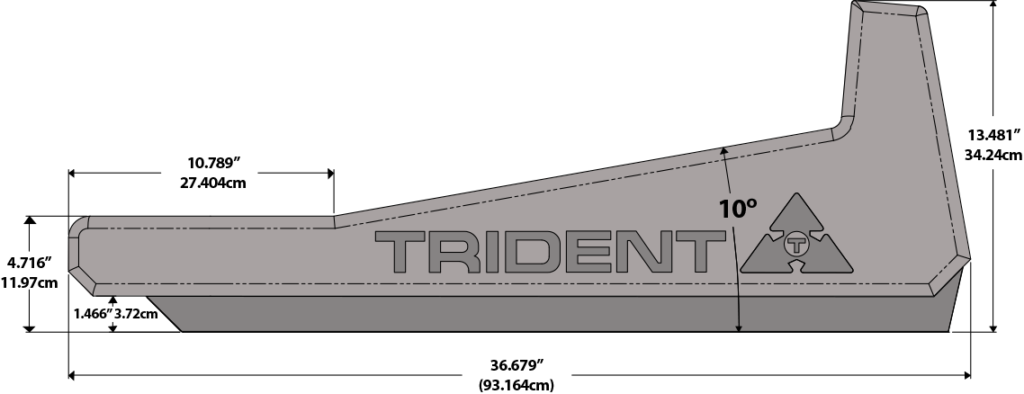
| Dimensions | Dimensions: | Dimensions: | Dimensions: |
| Width | Depth | Height | |
| (top to bottom) | (top to bottom) | (top to bottom) | |
| 16 Channel: | 33.370" (84.759cm) | 36.679" (93.164cm) | 13.481"(34.241cm) |
| 24 Channel: | 43.370" (110.159cm) | 36.679" (93.164cm) | 13.481"(34.241cm) |
| 32 Channel: | 53.370" (135.559cm) | 36.679" (93.164cm) | 13.481"(34.241cm) |
| 40 Channel: | 63.37" (160.959cm) | 36.679" (93.164cm) | 13.481"(34.241cm) |
| Module width is 1.25" (3.175cm) | Module width is 1.25" (3.175cm) | Module width is 1.25" (3.175cm) | Module width is 1.25" (3.175cm) |
Power Consumption
| Trident Series 88 Consoles Power Consumption | |
| Total 16 Input Mixer | 120 Watts |
| Total 24 Input Mixer | 155 Watts |
| Total 32 Input Mixer | 195 Watts |
| Total 40 Input Mixer | 230 Watts |
| Total 48 Input Mixer | 265 Watts |
| Total 56 Input Mixer | 305 Watts |
| Total 64 Input Mixer | 340 Watts |
Trident 88 Console Recordings
Anthony Nino Salazar on Drums Recorded Through a Trident 88 Analogue Console
Marty O’Reilly on electric guitar & vocals recorded through the Trident 88 Console
Jeff Kissell demonstrates bass recorded on the Trident 88 Console
Alexandra Starlight on vocal through the Trident 88 Console, the two separate WAV files demonstrating the differing sounds of the Trident Preamplifier and the Trident Preamplifier with the Lundahl transformer
Johnny Marston on Electric Bass Recorded through a Trident 88 Pre with Lundahl transfomer
Demonstration of the Trident 88 EQ
Charlie Waymire discusses the Trident 88 Equaliser Part 1: Drums
The Trident 88 Console EQ Demo at Ultimate Studios Inc Part 2
Adam Moseley and the Beck Black Sessions
Adam Moseley Sessions at Ultimate Studios Inc, Part 1: Preparing to record “Vampires Come Out at Night” by Beck Black on the Trident 88
Adam Moseley Sessions at Ultimate Studios Inc, Part 2: Tracking Drums for Beck Black’s “Vampires Come Out at Night” on the Trident 88
Adam Moseley Sessions at Ultimate Studios Inc, Part 3: Mixing “Vampires Come Out at Night” on the Trident 88
Part 4: Listen to “Vampires Come Out at Night” recorded and mixed on the Trident 88
Marty O’Reilly & the Old Soul Orchestra Sessions
Marty O’Reilly & the Old Soul Orchestra perform Cinnamon Tree, recorded at Ultimate Studios
Marty O’Reilly & the Old Soul Orchestra perform Letters, recorded at Ultimate Studios
Alexandra & the Starlight Band Sessions
Alexandra & the Starlight Band perform We Can Work It Out, recorded at Ultimate Studios
Alexandra & the Starlight Band perform Without You, recorded at Ultimate Studios
The Mic Insert Demo and Lundahl Transformer Option
Charlie Waymire demonstrates the mic insert feature on the Trident 88
Charlie Waymire demonstrates the sound of the Lundahl transformer
If you are interested in a demo in the US, please contact Trident Audio at sales@tridentaudiodevelopments.com or call 310.323.9050
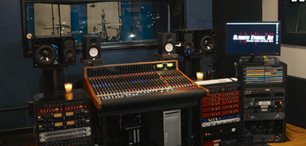
Ultimate Studios Inc.
Panorama City, California
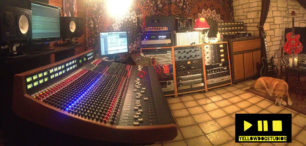
Yellow Dog Studio
Wimberley, TX
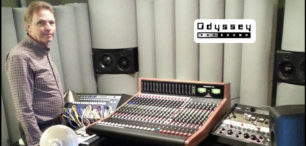
Odyssey Pro Sound
West Concord MA
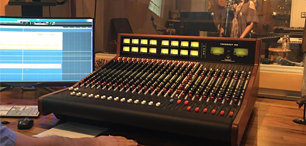
Breed Music
Dallas, Texas
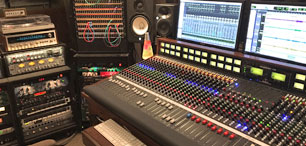
La Luna Recording & Sound
Kalamazoo, Michigan
If you are interested in a demo in the UK or Germany area please contact Trident Audio at jb@tridentaudiodevelopments.com or call +44 (0)1803 612 700

Just Music Berlin
Pariser Straße 9
Berlin, Germany 10719
030-88-77-55-66
info@justmusic.de
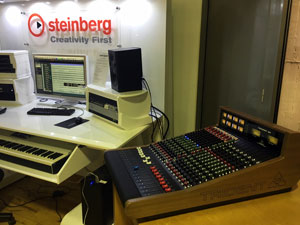
Just Music Hamburg
Feldstraße 66
Hamburg, Germany 20359
030-88-77-55-66
info@justmusic.de
Funky Junk Ltd.
Unit 10, 407-409 Hornsey Road
London UK N19 4DX
+44(0)207-281-4478
sales@funky-junk.co.uk
WoodBrass
13 avenue du Nouveau Conservatoire
Paris France 75019
+33(0)1 77 16 50 90
studiopro@woodbrass.com
Read Our Trident 88 Reviews
Click here to read Sound On Sound’s Review by Paul White
Click here to read Mix Magazine’s Review by Barry Rudolph
Trident 88 Console Comparison Chart
| Console | Trident 88 | Trident 78 | Trident 68 | Rupert Neve 5088 | API 1608 | API Box | Audient ASP4816 | SSL XL-Desk |
|---|---|---|---|---|---|---|---|---|
| Price | $32,750.00 | $21,000.00 | $13,750.00 | $98,500.00 | $49,900.00 | $16,145.99 | $16,999.99 | $32,999.99 |
| Channels | 16 | 16 | 16 | 16 | 16 | 20 | 16 | 20 |
| Automation | Optional | No | No | Optional | Optional | Optional | No | No |
| Inputs - Mic Preamps | 16 x XLR Class A Discrete with transformer option | 16 via D Sub Class A Discrete | 16 via D Sub | None (Optional) | None (Optional) | 4 x XLR | 16 x XLR | 8 via DB25 |
| Phantom Powered Inputs | 16 | 16 | 16 | None (Optional) | None (Optional) | 4 | 16 | 8 |
| Channel Inputs - Line | 32 (16 Line and 16 Monitor on 1/4 "TRS) | 32 D Sub | 32 D Sub | 32 (12 Mono 4 Stereo XLR and 16 Tape XLR) | 32 (16 1/4" TRS Instrument and 16 XLR Line) | 20 4 x TRS (input channels); 2 x DB25 (summing channels 1-8 and 9-16) | 16 x TRS | 48 (16 Line DB25 16 DAW DB25 16 500 DB25 |
| Inputs - Other | 19 8 Stereo FX 1/4" TRS, 8 Mono Monitor Returns 1/4" TRS, 2 Stereo 2 Track Returns 1/4" TRS, 1/8" Stereo Input (Ipod) External Talkback Mic XLR | 19 8 Stereo FX D Sub, 8 Mono Monitor Returns D Sub, 2 Stereo 2 Track Returns D Sub, 1/8" Stereo Input (Ipod) External Talkback Mic XLR | 19 8 Stereo FX D Sub, 8 Mono Monitor Returns D Sub, 2 Stereo 2 Track Returns D Sub, 1/8" Stereo Input (Ipod) External Talkback Mic XLR | 12 8 Buss Input 1/4" TRS, 4 L/R Mono Returns XLR | 32 16 Fader Input 1/4" TRS and 16 EQ Input 1/4" TRS with optional 500 units added | 4 x TRS (instrument) 1 x DB25 (external 2-track inputs) | 16 16 Monitor Inputs | 4 Stereo via DB25 |
| Number of Inputs to Mix | 56 (all with EQ) 16 Channel Inputs 16 Channel Monitor Inputs 8 Stereo Effects Returns (=16) 8 Group Monitor Inputs | 56 16 Channel Inputs 16 Channel Monitor Inputs 8 Stereo Effects Returns (=16) 8 Group Monitor Inputs | 56 16 Channel Inputs 16 Channel Monitor Inputs 8 Stereo Effects Returns (=16) 8 Group Monitor Inputs | 32 16 Channel Inputs 16 Tape Inputs | 32 16 Channel Inputs 8 Buss Inputs | 20 16 Summing Inputs 2 EQ Inputs 2 500 Slot Inputs | 48 16 Channel Inputs 16 Monitor Inputs 4 Stereo Inputs | 20 16 Mono 4 Stereo |
| Inserts | 42 (16 Chan, 16 Mic Insert, 8 Subgroups and 2 Main) | 25 (16 Chan, 8 Subgroup and 1 Main) | None (Optional) | 26 16 chan 1/4" TRS, 8 Buss 1/4" TRS, 2 Main 1/4" TRS | 16 1/4" TRS | 16 | 16 Via DB25 | |
| EQ's | 48 16 4 Band, 16 Tilt, 16 Hi/Lo | 16 3 Band | 16 3 Band | None (Optional) | None (Optional) | 2 | 16 | None (Optional) |
| EQ Bands | 4 Band Sweepable (all 16 Inputs ) Tilt EQ (all 16 Channel Monitor I/Ps) Hi/Lo (all 8 Group Monitor Returns) Hi/Lo (All 8 Stereo FX Returns) | 4 Band, Mid Bands Sweepable (all 16 Inputs ) | 3 Band Sweepable with adjustable Q | None (Optional) | None (Optional) | 3-band, sweepable (x 2) | 4 Band | None (Optional) |
| Aux Sends | 8 4 Mono Pre/Post 2 Stereo Pre/Post, | 6 4 Mono Pre/Post 1 Stereo Pre/Post, | 6 4 Mono Pre/Post 1 Stereo Pre/Post, | 8 Mono Pre/Post | 8 Stereo Aux Pre/Post | 4 x sends fed by 2 mono aux sends (1/2), and 1 stereo aux/cue send (3/4) | 6 sends | 2 via DB25 |
| Outputs - Direct | 16 1/4 TRS (Selectable post return or post fader) | 16 D-Sub (Selectable post return or post fader) | 16 D-Sub (Selectable post return or post fader) | 16 XLR | 16 XLR | 16 via D-SUB | 3 via D-SUB | 16 Via DB25 |
| Outputs - Main | 2 XLR Main Out, 2 XLR Monitor Out, 2 Alt TRS Stereo, 2 TRS L/R Studio | 2 XLR and D Sub Main Out, 1 XLR and D Sub Monitor Out, 2 D Sub L/R Studio | 2 XLR and D Sub Main Out, 1 XLR and D Sub Monitor Out, 2 D Sub L/R Studio | 2 x XLR L/R Main Out, 6 x XLR L/R (A,B,C Feeds) | 2 XLR Main Out and 6 XLR Out for 5.1 | 2 x XLR (program); 4 x XLR (main, alt CR outputs) | 8 x XLR | 2 XLR L/R 3 x DB25 |
| Outputs - Other | 16 8 Aux Out 1/4" TRS 8 Group Out 1/4" TRS | 14 6 Aux Out D-Sub 8 Group Out D-Sub | 14 6 Aux Out D-Sub 8 Group Out D-Sub | 8 Aux Outputs XLR | 8 Echo Return to Optional 500 Slots 1/4" TRS | 1 x DB25 (4 aux outputs / 2 cue outputs) | 24 D-Sub Group Outputs | 8 Stereo via DB25s |
| Busses/Groups | 8 | 8 | 8 | 8 | 8 | 2 | 16 | 4 Stereo Buss |
| Faders | 25 | 25 | 25 | 25 | 17 | 20 | 16 | 20 |
| Headphones | 1 x 1/4" TRS and 2 x 1/8 " | 1 x 1/4" TRS and 2 x 1/8 " | 1 1/4" TRS | 1 1/4" TRS | 1 x 1/4" TRS | No | 1x 1/4" TRS | |
| Meter Bridge | Full LED Stock, VU Optional | Full LED Stock, VU Optional | Full LED with Stereo VU's | No, Optional VU Bridge | Yes Full VU | 2 VU Stereo Only | Yes LED | 4 Stereo Mix LED Bargraphs |
| Talkback | Yes | Yes | Yes | Yes | Yes | Yes | Yes | Yes |
| All competitor stats gathered from information available online. |
Download Trident 88 Literature
Trident Console Warranty
Trident Audio Developments Limited Warranty Statement
The following outlines the warranty periods for The Trident Analogue console. All extended coverage is based on the timely registration of said products within the 30 days of purchase to the original purchaser from the date of Proof Of Purchase. Proof of purchase is the original Bill Of Sale or Sales Invoice from an authorized dealer.
Inquire about extended warranty.
Trident Audio Developments is covered by a limited warranty against defects
in materials and workmanship (parts and labor) for a period of Two (2) Years from the date the unit is sold to the Dealer or original purchaser only.
Receive an additional free year warranty covering parts and labor with the registration of your console!
Acceptable registration is met by filling out online the warranty registration, along with a copy of the original sales receipt as proof of the original date of purchase. tridentaudiodevelopments.com/product-registration
The terms and conditions of this limited warranty are:
1. The warranty applies to Trident Audio Developments purchased from Trident Audio or authorized Trident Audio dealers. The authorized dealers of Trident Audio products are listed at each brands websites, or on the main page at tridentaudiodevelopments.com
2. The warranty covers any defects in materials and workmanship, and is limited to the repair or replacement of the original registered product. In its sole discretion, Trident Audio may either repair or replace the product with a product of the same model, or replace the product with a new model of a similar specification, when the same model is no longer available.
3. The warranty does not cover any of the following: damage caused by the user; spillages or moisture damage; neglect, abuse or misuse, including but not limited to the failure to use the products for its normal purpose in accordance with the manufacturer’s instructions for use, failure to properly maintain the product in accordance with the manufacturer’s instructions, and/or the failure to use the products in accordance with the manufacturer’s specifications; normal wear and tear; use of products with incompatible or faulty equipment; unauthorized modifications; repairs conducted by unauthorized persons or service center’s; the model and/or serial number being altered, removed or made illegible; accidents; or acts of God or any cause beyond the control of Trident Audio.
It does not cover damage caused by connecting to improper power voltage supply, cosmetic defects, such as paint finish, and general wear and tear. All consumables items such as fuses, meter bulbs and component shelf life on pots, faders and switches are covered by a 90 day limited warranty. Products sold in AS IN, B Stock, or DEMO model condition are not covered.
4. The warranty is applicable to the original purchaser throughout the warranty period as stated above or until original owner resells product. If a unit is received for warranty repair, and after complete examination and testing, no problem is found with the unit, customer will be charged for time, labor, and return shipping costs, presuming initial user error falsely caused the unit to be determined faulty, or no fault was found.
5. The warranty does not affect any statutory rights the original purchaser may have in accordance with the law applicable in the jurisdiction where the product was purchased, or any rights the original purchaser may have against the authorized dealer pursuant to their original purchase agreement.
6. Any claim pursuant to this warranty from the date of purchase of any Trident Audio Developments product must be returned, together with the original proof of purchase, to the authorized Trident Audio reseller that sold the product, or to the Trident Audio service center in either the USA or the UK. All returns to Trident Audio, Trident Audio UK or any Trident Audio Service Center must be in the original packing, accompanied by the issued Repair Authorization, and must be shipped to the address specified on the Return Authorization via insured freight at the customer’s own expense. Factory original packaging can be ordered from Trident Audio if the original has been thrown away. Customer will be charged for new factory original packaging if customer fails to ship product to Trident Audio in the original factory packaging. Trident Audio will not pay for express or overnight or other special service delivery.
7. Once the product has been received, the authorized Trident Audio service center will assess the warranty claim and arrange to either repair or replace in accordance with the warranty procedure prescribed by Trident Audio for their authorized service center network. The warranty replacement will be conducted by the authorized Trident Audio service center as promptly as possible and within a reasonable time from the date of submission of the warranty claim pending pandemic conditions. In all circumstances, a claimant under this warranty will be liable for all costs in delivering their Trident Audio brand product to the authorized service center for warranty replacement, and for all costs in collecting the repaired/replacement Trident Audio product from that authorized Trident Audio service center no matter what the distance may be. Trident Audio service center may waive the cost of return shipping after full inspection to determine cause of warranty.
8. Trident Audio will not accept any warranty replacement without the original proof or purchase of the Trident Audio product, and without the registration of the Trident Audio product within 30 days of purchase by mail, or online. It is the original purchaser’s responsibility to keep the original proof or purchase safe at all times, as Trident Audio is not obliged to provide a replacement of the original proof or purchase.
9. The warrantor assumes no liability for property damage, lost income, or any other incidental or consequential damage whatsoever which may result from failure of this product and it’s use.
10. A Trident Audio product that was not purchased through an authorized and legitimate sales channel is considered “Grey Market”. Warranties for Trident Audio Products purchased outside the USA will be covered by Trident Audio UK for that specific country or region, or by local Trident Audio distributors. Trident Audio product originally sold to the USA market and consequently resold overseas forfeits its warranty. American Trident Audio Dealers are forbidden to export Trident Audio Products. Non-American dealers are forbidden to export to the USA. “Grey Market” purchases are not covered by any warranty. In the case that a Trident Audio Product must be returned, it should be returned to the original place of purchase, or the Trident Audio factory, with proper return authorization. Returns from outside the USA, customer shall adhere to specific shipping, customs, and commercial invoicing instructions given with the Return Authorization. Trident Audio will not be responsible for transportation costs, Duties or customs fees related to any importation or re-exportation charges whatsoever.
11. Trident Audio shall not be liable for damages of the Trident Audio product arising out of the use or inability to use the Trident Audio product insofar as allowed to be disclaimed by law in the jurisdiction where the Trident Audio product was purchased.
Governing Laws
Any dispute, controversy, or claim arising out of or relating to this Agreement shall be decided by arbitration in Los Angeles, California, in accordance with the rules of the American Arbitration Association(the “Association) then in effect. Any award rendered by the Association shall be final, binding, and not subject to appeal, and may be enforced by any court of competent jurisdiction.
For Tech Support and Repair Authorisation, please contact:
US Service & Sales
1845 W. 169th Street Gardena, CA 90247
+1 (310) 323-9050
support@tridentaudiodevelopments.com
